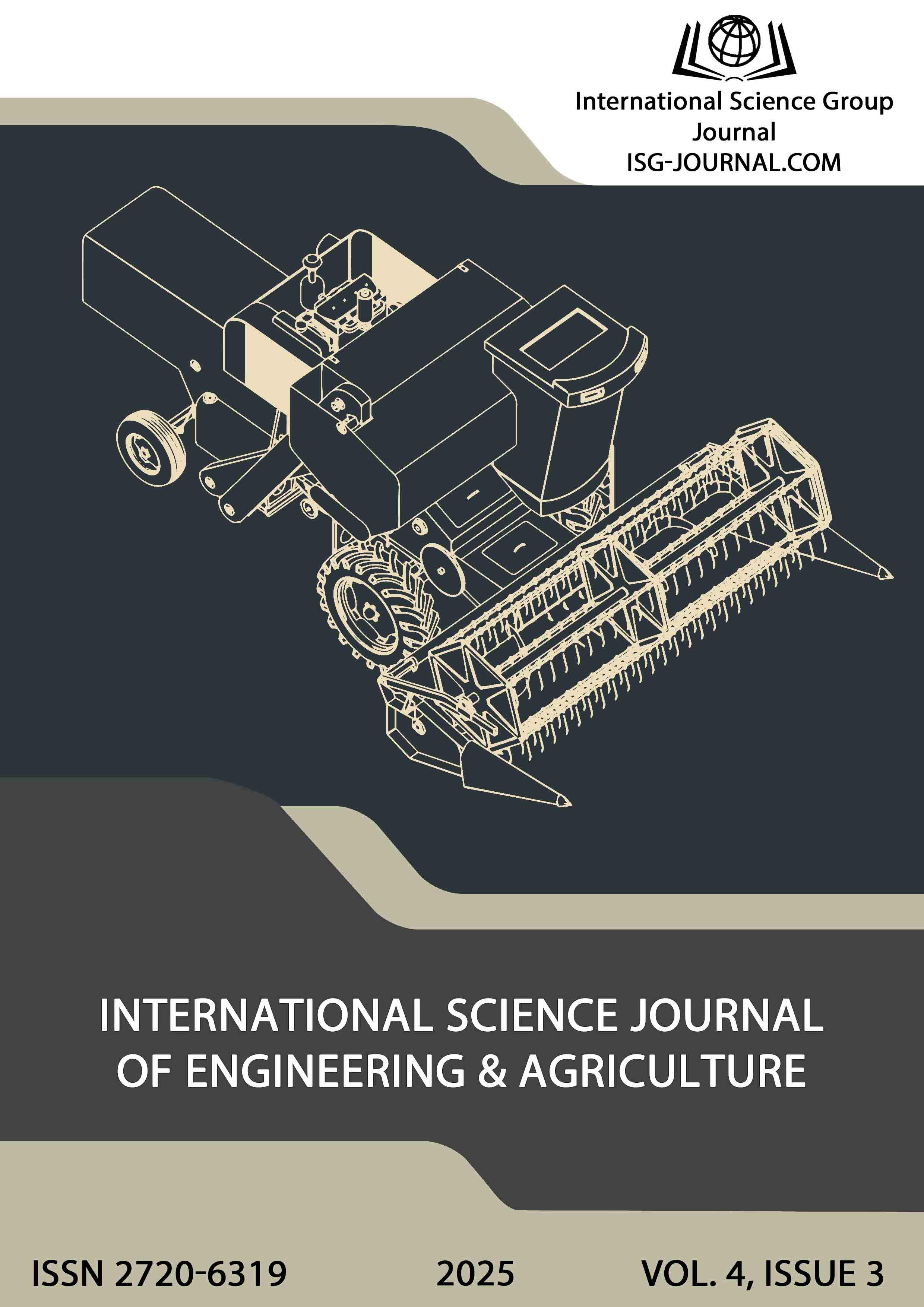Fundamental approaches to the development of computer modeling complexes
DOI:
https://doi.org/10.46299/j.isjea.20250403.01Keywords:
computer modeling complex, organizational management systems, modeling, integration, information technologies, automation, decision-making, data visualizationAbstract
The article addresses a pressing scientific and technological challenge: the development of theoretical and methodological foundations for constructing a modeling complex (MC) as both a simulation environment and a technological platform for the analysis, design, and refinement of key project solutions in the development of organizational control systems (OCS) of various types, including those in the defense sector. The relevance of using modeling complexes in the development of OCS is supported by several factors: Contemporary organizations are confronted with multifaceted challenges such as the need to adapt to emerging technologies, increasing globalization, and intensified competition. Computer-based modeling complexes (CMCs) provide an effective means to explore advanced technologies, simulate diverse operational scenarios, and support informed decision-making. The rapid evolution of information technologies offers new opportunities for enhancing organizational management methods. By testing these technologies within CMCs, organizations can improve the performance and adaptability of their control systems. Continuous efforts to optimize operations, reduce costs, and increase productivity necessitate robust tools for simulating, analyzing, and optimizing business processes. CMCs provide such tools, facilitating more efficient and resilient organizational workflows. Organizations today must handle vast and heterogeneous data streams. CMCs enable the integration and analysis of disparate data sources, revealing key trends and dependencies that inform strategic and tactical decisions. Advanced modeling techniques enhance the accuracy of outcome forecasting and help mitigate risks, which is particularly critical in complex and volatile business environments. Accordingly, the selection and validation of practically applicable formalized methods that support high-speed decision-making, ease of use, and intuitive result visualization require the implementation of a computer-based modeling complex. Such a system must be capable of accurately simulating management processes, while considering hierarchical structures and the dynamic interactions among control elements within the organizational system.References
Dean, J., & Ghemawat, S. (2008). MapReduce: Simplified data processing on large clusters. Communications of the ACM, 51(1), 107–113.
Goodfellow, I., Bengio, Y., & Courville, A. (2016). Deep learning. MIT Press. Cambridge.
Lee, M. D. P. (2008). A review of the theories of corporate social responsibility: Its evolutionary path and the road ahead. International Journal of Management Reviews, 10(1), 53–73.
Sterman, J. D. (2000). Business dynamics: Systems thinking and modeling for a complex world. Irwin McGraw-Hill.
Bower, J. L., & Christensen, C. M. (1995). Disruptive technologies: Catching the wave. Harvard Business Review, 73(1), 43–53.
Fama, E. F. (1970). Efficient capital market: A review of theory and empirical work. Journal of Finance, 25(2), 382–417.
Floridi, L. (2014). The fourth revolution: How the infosphere is reshaping human reality. Oxford University Press.
Chalmers, D. J. (1996). The conscious mind: In search of a fundamental theory. Oxford University Press.
Sargent, R. G. (2013). Verification and validation of simulation models. Journal of Simulation, 7(1), 12–24. https://doi.org/10.1057/jos.2012.20
Banks, J., Carson, J. S., Nelson, B. L., & Nicol, D. M. (2010). Discrete-event system simulation (5th ed.). Prentice Hall.
Fishman, G. S. (1996). Monte Carlo: Concepts, algorithms, and applications. Springer-Verlag. https://doi.org/10.1007/978-1-4757-2553-7
Dodonov, O. G. (2016). Computer modeling of organizational management systems. Mathematical Machines and Systems, (3), 85–92.
Zadachyn, V. M., & Koniushenko, I. H. (2010). Modeling of systems (V. M. Zadachyn & I. H. Koniushenko, Eds.). KhNEU Press.
Steinman, J. (1991). SPEEDES: Synchronous parallel environment for emulation and discrete-event simulation. In SCS Western Multiconference on Advances in Parallel and Distributed Simulation (PADS91) (Vol. 23). https://connections-qj.org/ru/article/speedes-synchronous-parallel-environment-emulation-and-discrete-event-simulation
Stevens, C., & Bagheri, H. (2022). Parasol: Efficient parallel synthesis of large model spaces. CSE Conference and Workshop Papers, (335). https://digitalcommons.unl.edu/cseconfwork/335
IEEE. (2010). IEEE standard for modeling and simulation (M&S) high level architecture (HLA) – Framework and rules (Standard No. 1516-2010).
Kelton, W., & Law, A. (2004). Simulation modeling. BHV Publishing Group
Dodonov, O. G. (2016). Computer modeling of organizational management processes. Bulletin of the National Academy of Sciences of Ukraine, (1), 69–77.
Dodonov, A. G., Lande, D. V., Putiatin, V. G., et al. (2014). Building an organizational management system for an aviation complex. Registration, Storage and Data Processing, 16(1), 28–43.
Dodonov, A. G., Putiatin, V. G., Kutsenko, S. A., et al. (2014). Computer modeling of the organizational management system of an aviation complex. Registration, Storage and Data Processing, 16(3), 25–44.
Dodonov, A. G., Putiatin, V. G., & Butochnov, A. N. (2014). Organization of the structure of information processing and management system. Mathematical Machines and Systems, (4), 18–34.
Dodonov, A. G., & Putiatin, V. G. (2014). Computer modeling of the control system of a mobile aviation complex. Mathematical Machines and Systems, (4), 156–170.
Dodonov, A. G., Putiatin, V. G., Kutsenko, S. A., et al. (2015). A scenario-based approach to modeling functional tasks on a computer modeling complex. Mathematical Machines and Systems, (2), 113–129.
Dodonov, O. G., Putiatin, V. G., Kutsenko, S. A., & Lande, D. V. (2017). Development of a generalized structure of the information system for organizational management. Mathematical Machines and Systems, (3), 3–22.
Dodonov, A. G., Putiatin, V. G., Kutsenko, S. A., et al. (2016). Simulation process management for solving functional tasks on a computer modeling workstation of the ISOU AC. In Proceedings of the 5th International Scientific Conference “Modeling–2016” (Kyiv, May 25–27, 2016), IPME NAS of Ukraine, 225–228.
Horbulin, V. P., & Dodonov, O. G. (2023). Modeling complex for creating an automated control system integrating strategic, operational, and tactical command levels. Armament and Military Equipment, 2(38), 57–64.
Downloads
Published
How to Cite
Issue
Section
License
Copyright (c) 2025 Ievgenii Dodonov

This work is licensed under a Creative Commons Attribution 4.0 International License.






